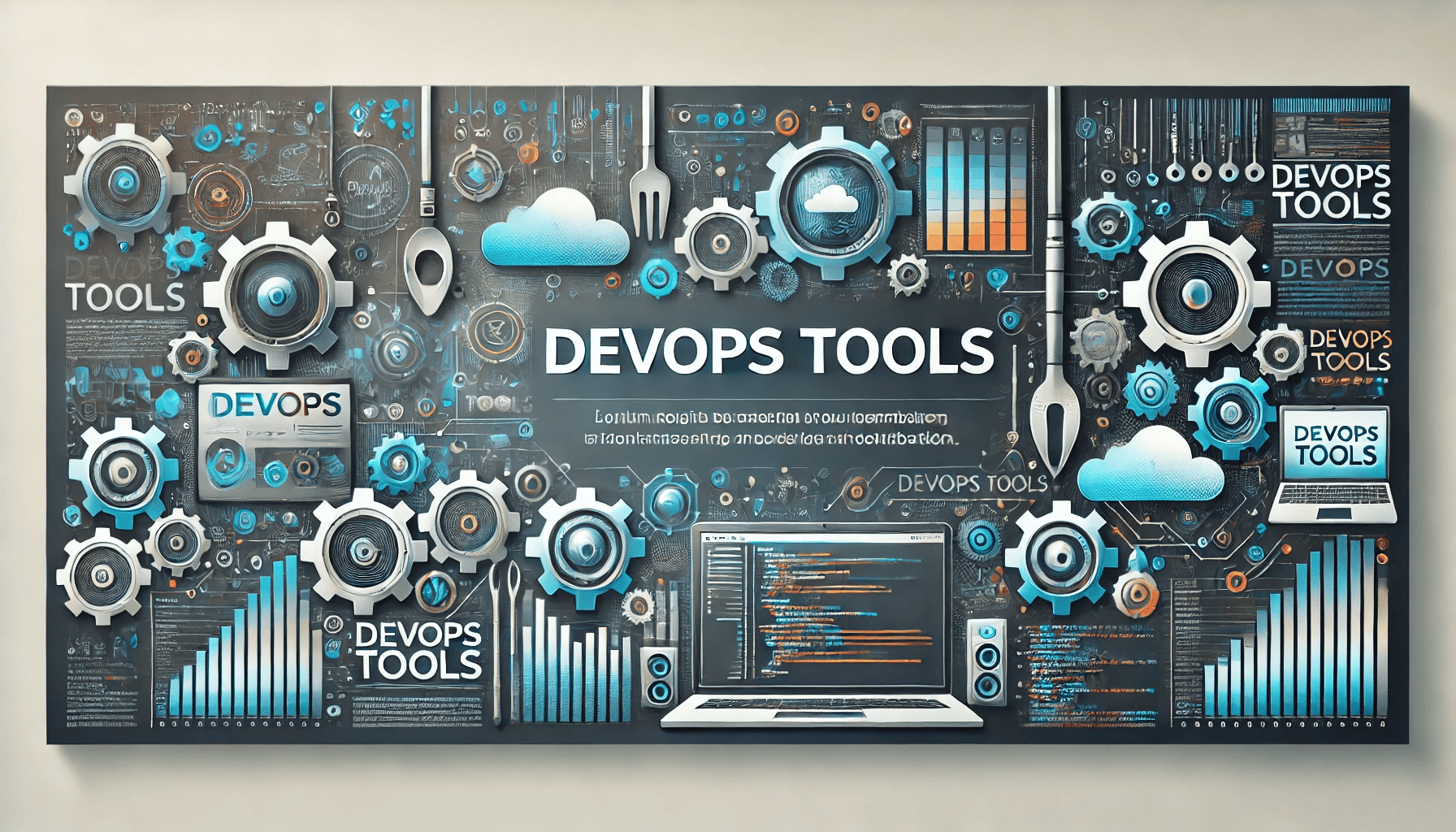Infrastructure as Code (IaC) - A Comprehensive Guide to DevOps Automation Tools: Ansible, Puppet, Chef, Terraform (and OpenTofu), Pulumi, CloudFormation, and More

In the rapidly evolving landscape of software development, DevOps has emerged as a pivotal methodology that bridges the gap between development and operations teams. Central to this paradigm are automation tools that streamline processes, enhance collaboration, and ensure reliable deployments. This article delves into some of the most prominent DevOps tools—Ansible, Puppet, Chef, Terraform (and its fork OpenTofu), Pulumi, CloudFormation, and others—exploring their histories, uses, comparisons, pros and cons, and their significance in modern DevOps and Platform Engineering.
Table of Contents
Ansible

Official Website: Ansible
History
Ansible was created by Michael DeHaan and first released in 2012. Acquired by Red Hat in 2015, Ansible has since become one of the leading automation tools in the DevOps ecosystem. Its simplicity and agentless architecture have made it a favorite among system administrators and DevOps engineers.
Uses
- Configuration Management: Automate the setup and maintenance of systems.
- Application Deployment: Streamline the deployment of applications across various environments.
- Orchestration: Manage complex workflows and multi-tier deployments.
- Provisioning: Set up infrastructure resources on cloud platforms.
Pros
- Simplicity: Uses YAML for playbooks, making it easy to read and write.
- Agentless: Operates over SSH, eliminating the need for agents on target machines.
- Extensible: Supports a wide range of modules and integrations.
- Community Support: Large and active community contributing modules and roles.
Cons
- Performance: May be slower for managing a large number of nodes compared to agent-based tools.
- Limited Windows Support: While improved, historically weaker support for Windows environments.
- Complexity in Large Playbooks: Playbooks can become unwieldy as they grow in size and complexity.
Puppet
Official Website: Puppet
History
Puppet was developed by Luke Kanies and first released in 2005. It pioneered the concept of configuration management as code and has been instrumental in shaping modern DevOps practices. Puppet Labs (now Puppet) continues to innovate in the automation space.
Uses
- Configuration Management: Ensure systems are configured consistently.
- Infrastructure as Code: Define infrastructure using declarative language.
- Continuous Delivery: Automate the delivery pipeline for applications.
- Compliance Management: Enforce security and compliance policies across infrastructure.
Pros
- Mature Ecosystem: Extensive modules and integrations available.
- Scalability: Designed to manage large-scale infrastructures efficiently.
- Declarative Language: Clear and concise language for defining configurations.
- Reporting and Compliance: Robust reporting features for auditing and compliance.
Cons
- Steeper Learning Curve: More complex language compared to tools like Ansible.
- Agent Requirement: Requires Puppet agents on target machines, adding overhead.
- Resource Intensive: Puppet server can become resource-heavy in large deployments.
Chef
Official Website: Chef
History
Chef was created by Adam Jacob and first released in 2009. It introduced the concept of “recipes” and “cookbooks” for automating infrastructure configuration. Chef Software, Inc. continues to develop and support the platform, catering to complex infrastructure automation needs.
Uses
- Configuration Management: Automate the configuration of servers and applications.
- Infrastructure as Code: Define infrastructure using Ruby-based DSL.
- Continuous Integration/Continuous Deployment (CI/CD): Integrate with CI/CD pipelines for automated deployments.
- Compliance Automation: Enforce security and compliance standards across infrastructure.
Pros
- Flexibility: Uses Ruby DSL, allowing for complex configurations and logic.
- Extensive Community: Large repository of cookbooks for various applications and services.
- Integration Capabilities: Integrates well with other tools and platforms.
- Test-Driven Infrastructure: Supports automated testing of infrastructure code.
Cons
- Complexity: Ruby-based DSL can be challenging for those unfamiliar with Ruby.
- Agent Requirement: Requires Chef agents on target machines.
- Steeper Learning Curve: More complex setup and management compared to some alternatives.
Terraform and OpenTofu
Official Websites:
History
Terraform, developed by HashiCorp and released in 2014, revolutionized infrastructure as code (IaC) by enabling the provisioning of infrastructure across various cloud providers using a declarative configuration language (HCL). In response to licensing changes by HashiCorp, the community forked Terraform to create OpenTofu in 2023, aiming to maintain an open-source, community-driven IaC tool.
Uses
- Infrastructure Provisioning: Create, manage, and version infrastructure across multiple cloud providers.
- Multi-Cloud Deployments: Manage resources across different cloud platforms from a single configuration.
- Immutable Infrastructure: Facilitate the creation of immutable infrastructure patterns.
- Resource Orchestration: Handle dependencies and orchestrate complex resource deployments.
Pros
- Provider-Agnostic: Supports a wide range of cloud providers and services.
- Declarative Syntax: Uses HCL, which is both human-readable and machine-friendly.
- State Management: Maintains state files to track resource changes and dependencies.
- Extensible: Supports custom providers and modules.
Cons
- State Management Complexity: Managing state files, especially in team environments, can be challenging.
- Learning Curve: Understanding HCL and Terraform’s workflows requires time.
- Performance: Large-scale deployments can lead to performance bottlenecks.
OpenTofu
OpenTofu aims to continue Terraform’s legacy by providing a fully open-source alternative with community-driven enhancements. It maintains compatibility with Terraform modules and providers, ensuring a smooth transition for users.
Pulumi
Official Website: Pulumi
History
Pulumi was founded in 2017, introducing a novel approach to infrastructure as code by allowing developers to use general-purpose programming languages (like TypeScript, Python, Go, and C#) instead of domain-specific languages. This enables more complex logic and integrations within IaC scripts.
Uses
- Infrastructure Provisioning: Define and manage infrastructure using familiar programming languages.
- Multi-Cloud Deployments: Support for multiple cloud providers through language-specific SDKs.
- Serverless Deployments: Simplify the deployment of serverless applications.
- Continuous Integration/Continuous Deployment (CI/CD): Integrate with CI/CD pipelines for automated infrastructure deployments.
Pros
- Language Flexibility: Use of general-purpose programming languages allows for advanced logic and integrations.
- Modern Development Practices: Supports features like loops, conditionals, and abstractions inherent in programming languages.
- Extensible: Easily integrate with existing development workflows and tools.
- Strong Cloud Support: Comprehensive support for major cloud providers and services.
Cons
- Learning Curve: Requires proficiency in supported programming languages.
- Less Mature: Compared to Terraform, Pulumi has a smaller ecosystem and community.
- Complexity for Simple Tasks: May be overkill for straightforward infrastructure provisioning.
AWS CloudFormation
Official Website: AWS CloudFormation
History
Launched by Amazon Web Services (AWS) in 2011, CloudFormation provides a native infrastructure as code service for AWS environments. It allows users to model, provision, and manage AWS resources using JSON or YAML templates.
Uses
- AWS Resource Provisioning: Automate the creation and management of AWS resources.
- Infrastructure as Code: Define AWS infrastructure using declarative templates.
- Stack Management: Manage related resources as stacks, enabling easy updates and deletions.
- Drift Detection: Identify deviations between the deployed stack and the template.
Pros
- Native AWS Integration: Seamless integration with all AWS services and features.
- No Additional Costs: Free to use, with costs associated only with the underlying AWS resources.
- Declarative Syntax: Define resources using JSON or YAML.
- Drift Detection: Automatically detect changes made outside of CloudFormation.
Cons
- AWS-Only: Limited to AWS environments, lacking multi-cloud support.
- Template Complexity: Large and complex templates can be difficult to manage.
- Limited Language Features: Uses JSON/YAML, which are less flexible than programming languages.
- Longer Learning Curve: Mastering all CloudFormation features can be time-consuming.
Comparison Table
| Feature / Tool | Ansible | Puppet | Chef | Terraform / OpenTofu | Pulumi | AWS CloudFormation |
|---|---|---|---|---|---|---|
| Primary Use | Configuration Management, Deployment | Configuration Management, Compliance | Configuration Management, Deployment | Infrastructure Provisioning | Infrastructure Provisioning | AWS Infrastructure Provisioning |
| Language | YAML | Puppet DSL | Ruby DSL | HCL | General-purpose Languages (e.g., Python, TypeScript) | JSON/YAML |
| Agent-Based | No (Agentless) | Yes | Yes | No | No | No |
| Multi-Cloud Support | Limited | Limited | Limited | Yes | Yes | No |
| Declarative | Yes | Yes | Yes | Yes | Yes | Yes |
| Imperative Capabilities | Limited | Limited | Limited | Limited | Extensive | Limited |
| State Management | No (Stateless) | Yes | Yes | Yes | Yes | Yes |
| Extensibility | High (Modules and Roles) | High (Modules) | High (Cookbooks) | High (Providers and Modules) | High (SDKs and APIs) | Limited to AWS Services |
| Ease of Learning | Easy to Moderate | Moderate to Hard | Moderate to Hard | Moderate | Moderate to Hard | Moderate |
| Community Support | Large and Active | Large and Active | Large and Active | Large and Growing (OpenTofu growing) | Growing | Strong within AWS Ecosystem |
| Best For | Simplicity and Quick Automation | Large-Scale Configuration Management | Complex Configuration and Automation | Multi-Cloud and Infrastructure Management | Developers wanting code-centric IaC | AWS-Centric Infrastructure Management |
Importance in Modern DevOps and Platform Engineering
In today’s DevOps and Platform Engineering landscapes, automation and infrastructure as code are not just advantages but necessities. These tools provide the framework to automate repetitive tasks, ensure consistency across environments, and enable rapid, reliable deployments. Here’s how each tool contributes:
-
Ansible: Ideal for teams seeking simplicity and rapid deployment without the overhead of managing agents. Its playbook-centric approach is excellent for automating configurations and deployments.
-
Puppet: Suited for large-scale environments requiring robust configuration management and compliance. Its mature ecosystem and scalability make it a go-to for enterprises.
-
Chef: Best for environments that need complex configurations and integrations. Its Ruby-based DSL offers flexibility for intricate automation scenarios.
-
Terraform / OpenTofu: Essential for infrastructure provisioning across multiple cloud platforms. Terraform’s declarative approach and extensive provider support make it indispensable for cloud-native applications.
-
Pulumi: Appeals to developers who prefer using familiar programming languages for infrastructure management, enabling more sophisticated logic and integrations within IaC scripts.
-
AWS CloudFormation: The default choice for AWS-centric deployments, offering tight integration with AWS services and native support for AWS features.
Together, these tools empower organizations to implement DevOps best practices, fostering collaboration, enhancing productivity, and ensuring the reliability and scalability of applications and infrastructure.
The DevOps ecosystem is rich with tools that cater to various aspects of automation, configuration management, and infrastructure provisioning. Ansible, Puppet, Chef, Terraform (and OpenTofu), Pulumi, and AWS CloudFormation each bring unique strengths and cater to different needs within the DevOps pipeline.
Choosing the right tool depends on factors like the specific requirements of the project, existing infrastructure, team expertise, and the desired level of flexibility and control. Often, organizations employ a combination of these tools to leverage their respective advantages, creating a robust and efficient DevOps workflow.
As DevOps continues to evolve, these tools will undoubtedly adapt, incorporating new features and integrations to meet the growing demands of modern software development and deployment practices.

